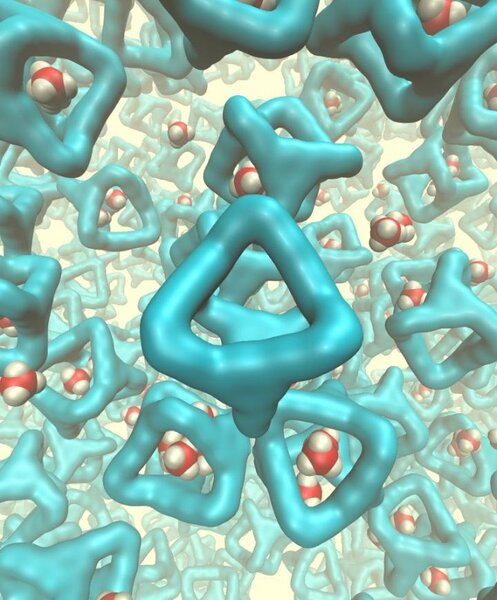Scientists design liquid that could trap carbon emissions
Loading...
Researchers in Ireland have created a liquid that’s full of holes. And that’s a good thing.
Professor Stuart James, of Queen's University Belfast School of Chemistry and Chemical Engineering, explains in the press release that in the past, most man-made porous materials have been solids. This is one of the first porous liquids.
“Materials which contain permanent holes, or pores, are technologically important," he explained. "They are used for manufacturing a range of products from plastic bottles to petrol. However, until recently, these porous materials have been solids. What we have done is to design a special liquid from the 'bottom-up' - we designed the shapes of the molecules which make up the liquid so that the liquid could not fill up all the space.”
“We took these cage-like molecules, which have a hollow space inside that can be accessed through small windows, and dissolved them at very high concentration in a solvent whose molecules are too large to fit through the windows,” Professor James told the Royal Society of Chemistry. “In that way we created a liquid which has empty pores floating around in it.”
The holes in the liquid’s chemical structure allow it to form potential “cages” around carbon dioxide and other greenhouse gases like methane. Because the EPA estimates that “the comparative impact of [methane] on climate change is more than 25 times greater than CO2 over a 100-year period,” there are profound implications for this porous liquid as a potential carbon-capture technology.
Capturing carbon dioxide can occur at any one of three different processes: before combustion, after combustion, or in a process called oxy-fuel combustion, where combustion takes place using pure oxygen instead of air. The scientists at the Queen’s University suggest that the porous liquid they created will be most effective for post-combustion carbon capture, where carbon can be captured as exhaust.
Other chemists suggest that the new liquid could have other uses as well.
“[T]his material bears many advantages because it is a fluid and can for example be pumped through tubing and pipes. This may someday find technological applications in gas separation or transport,” Dr. Michael Mastalerz, professor of organic chemistry at Heidelberg University, explained to the Royal Society of Chemistry.








